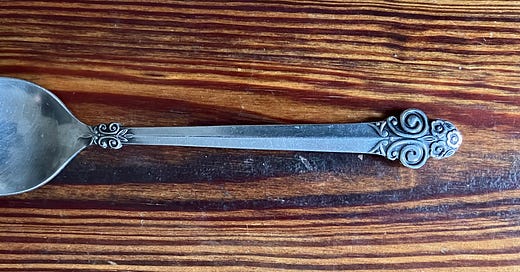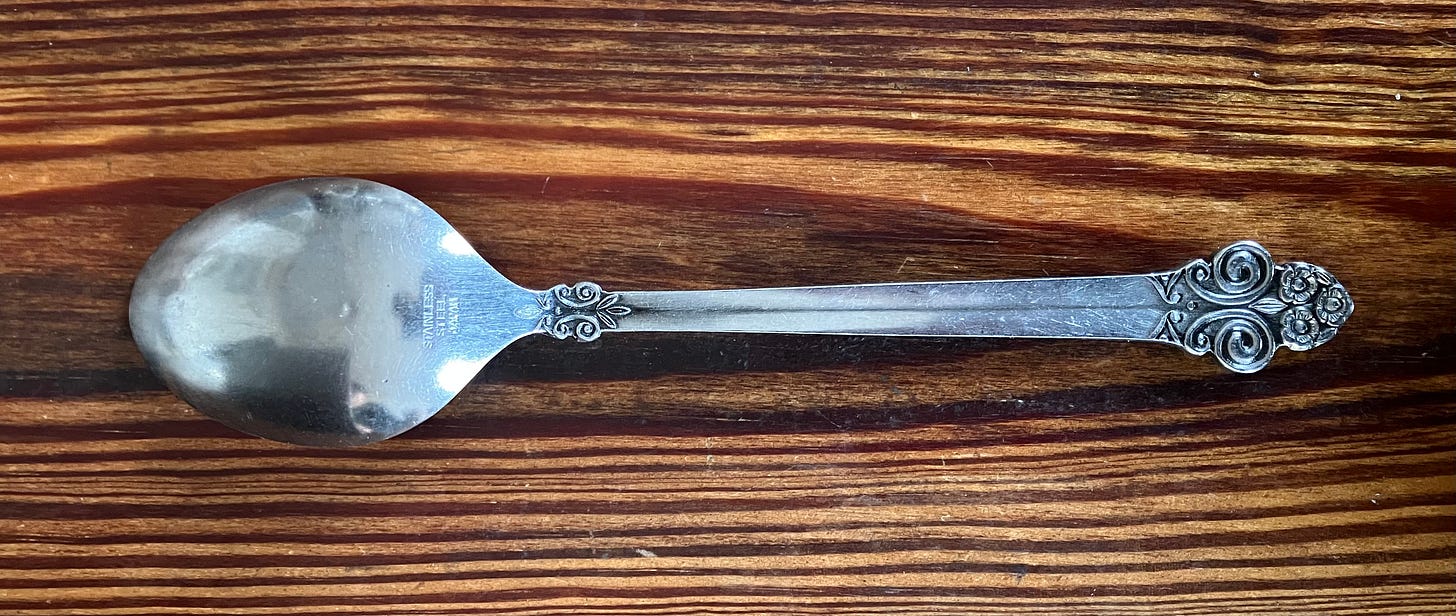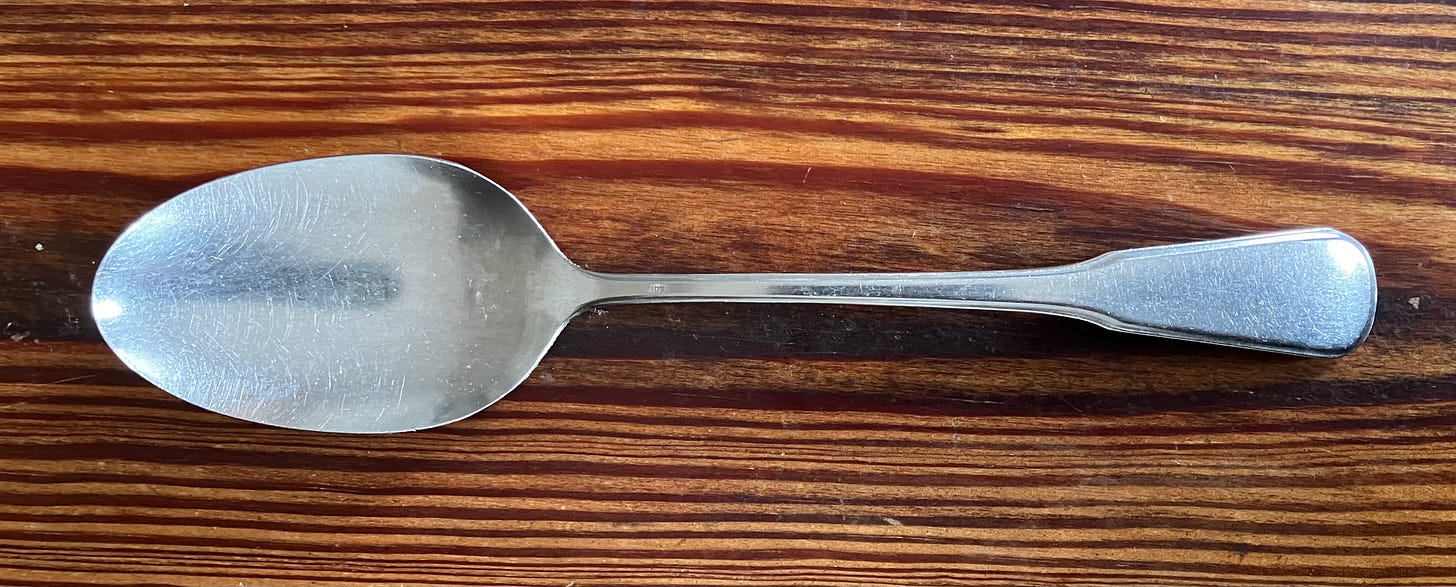1.
Really this spoon is D’s, though it passed through my hands around 2007, when my mum excavated it from one of the innumerable, immaculate drawers of objects she almost never uses. If we ever served you ice cream at the restaurant, D quenelled it with this spoon.
I’m unsure which came first, the quenelles or the magic. Making quenelles (sometimes referred to as rochers) is one of those mysterious kitchen skills that you can only learn with your hands, and the right tools. Not every spoon will quenelle, and you’ll never manage it with something the wrong shape. The first time you get one, it feels like a conjunction of stars that will never repeat itself, and you have no idea what went right, so the tendency is to try to recreate exactly what you did, from the phase of the moon to the apron you were wearing. This is how quenelle spoons come to be.
The only markings on it say:
STAINLESS STEEL
JAPANIt feels like it was made to be a talisman. Everything about it is more than it needs to be. The crease in the stem. The budding leaf at the nape of its neck. The trueness of the handle, apparent only in profile. The thick bowl with its compound edge, which makes it tip heavy like a knife.
2.
My mum gave us four of these along with the spoon above. The restaurant ate one, so now they’re a trio. Restaurant kitchens are voracious, and live on precious things. They’re lovely creatures with dignified lines and solidity in the hand, with deep bowls that produce buoyant quenelles.
My favorite thing about them is that they were apparently filched by my grandma from the Mandarin in Singapore, back when this typography was still the height of fashion. I imagine that moment whenever I use them, her giddiness, her wonder.
The problem with these is that they’re just a touch shorter than the bains we used for our tools, so I had to hunt for their handles amongst the spatulas and tweezers, fragments of time I didn’t want to spare on the line. So instead, I used this one:
3.
I have no idea where it came from, quite probably the Goodwill store in Davis Square, but it’s persisted like a faithful stray or a guilty conscience.
It has the plainness of middling quality and mass production, not so much impervious to time as ignorant of it. Some decades ago it was made at Oneida, and I take pleasure in those radical roots, even if now, several acquisitions later, they’re just makers of objects of no particular distinction, clutterers of the earth.
The bowl’s too shallow to quenelle, but perfect for basting. It gets into corners that would defy a fuller, deeper shape, and moves a reasonable quantity of molten butter. It’ll never be a spatula, but it’s flat enough and wide enough to turn a hanger steak, and herd things round the pan.
But though I keep reaching for it, it doesn’t feel like a workhorse. That swan’s neck is too thin, and whatever it’s made of wants to bend, so I’ve never really put my full trust in it – or maybe I’ve used it like it’s precious.
4.
For scale. That little spoon is several years newer to me than all the others, and found me in 2015 or so in a gravel parking lot in upstate New York, flung it there by I don’t know what. You can’t see the kink in its handle from here, a recurved, mis-set bone. I use it for spices from the jar, or salt at the table, things I wouldn’t use a utensil for, except that this one came by.








yay on job, boo on moving!
Great to read musings on spoons again. Shoot me a message and would love to get coffee, catch up, and hear about the next chapter.